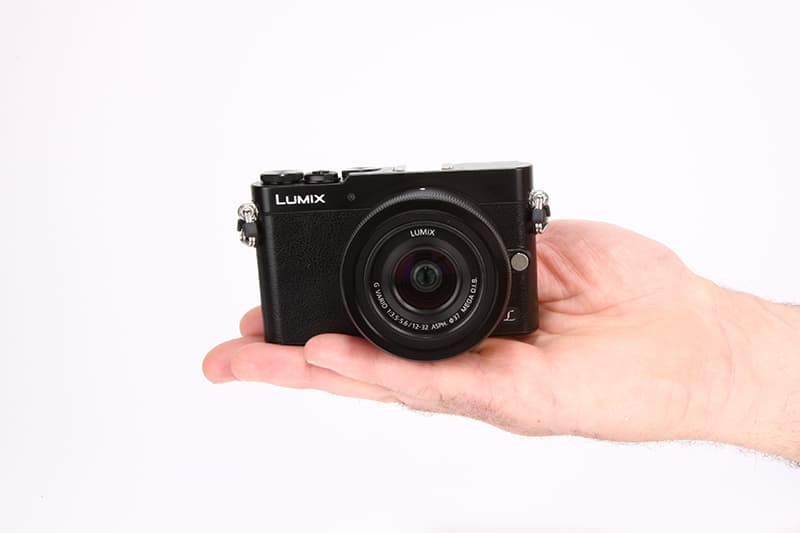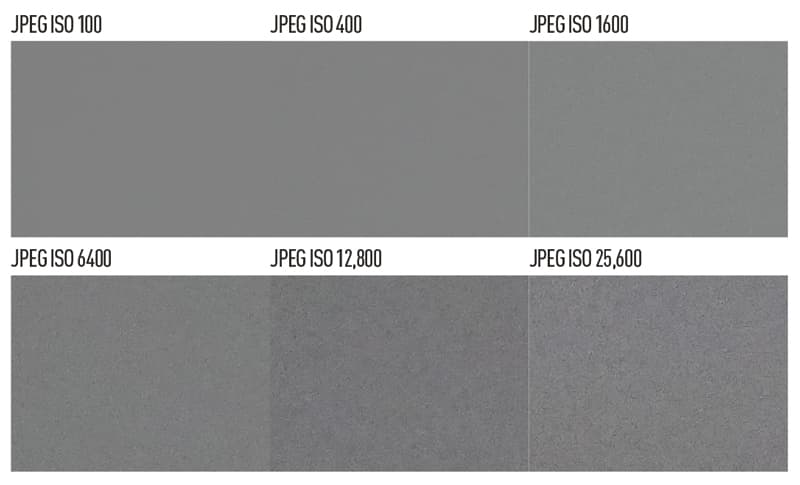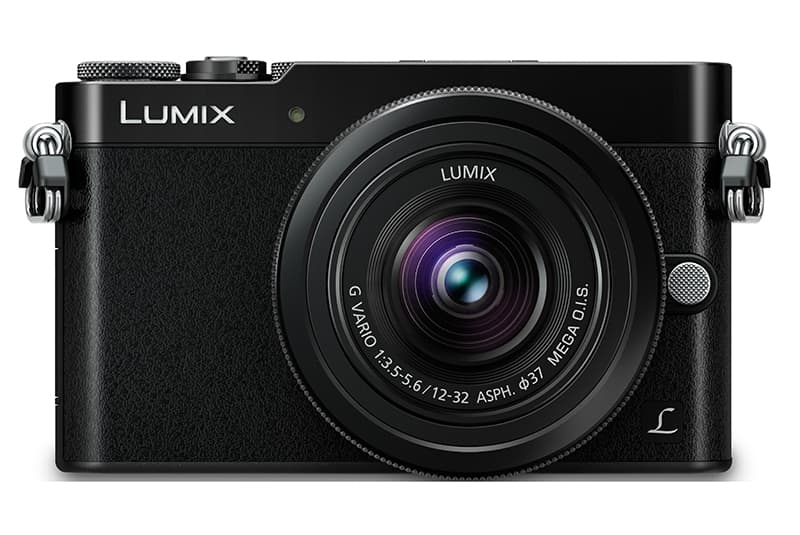Last year, we reviewed the Panasonic Lumix DMC-GM1, which had a compact size that made it unique: it was the smallest interchangeable-lens camera to feature a four-thirds sensor.
Skip forward a year, and Panasonic has announced another new member of the Lumix G family, in the form of the Panasonic Lumix DMC-GM5. It’s not a successor to the GM1 – it’s a more advanced bigger brother with a few exciting add-ons, but is certainly a continuation on the theme of small and compact.
A few of these exciting additions include an electronic viewfinder, a slightly larger LCD screen and hotshoe. Of course, housing all of this means it isn’t as small as the GM1, but it still maintains a very compact size.
Features
Inside the Panasonic Lumix GM5 is a four-thirds Live MOS Sensor with a resolution of 16-million pixels. This sensor is used in numerous Panasonic cameras, including the Panasonic DMC-GM1 and the more recent Panasonic Lumix LX100. Measuring 17.3 x 13mm across, it is bigger than the 1in-type sensors found in compact cameras, such as the Sony RX100 III or the Canon G7 X, but smaller than the APS-C sized sensors inside some DSLR cameras and CSCs. It’s very impressive to see a large-sized four-thirds sensor inside a camera with such a small form factor.
The GM5 has a native ISO sensitivity range of 200-25,600 and an extended setting of ISO 100. This is fractionally lower than the GM1’s extended ISO of 125. Images can be captured in either raw or JPEG format and the GM5 improves upon the shooting speed of the GM1’s 5fps, increasing it to 5.8fps in continuous shooting mode.
 However, what really sets the GM5 apart from the GM1 is the electronic viewfinder, with its resolution of 1166k dots – great for composing images in bright conditions. As with the GM1, the GM5 has a 3in touch-sensitive LCD display, but instead of a 3:2 ratio 1031k-dot screen, the GM5 has a 16:9 ratio 921k-dot resolution screen. This means it is longer, making it better for shooting video than the GM1. Video can be recorded in AVCHD full HD with a resolution of 1920 x 1080 at a 60i frame rate.
However, what really sets the GM5 apart from the GM1 is the electronic viewfinder, with its resolution of 1166k dots – great for composing images in bright conditions. As with the GM1, the GM5 has a 3in touch-sensitive LCD display, but instead of a 3:2 ratio 1031k-dot screen, the GM5 has a 16:9 ratio 921k-dot resolution screen. This means it is longer, making it better for shooting video than the GM1. Video can be recorded in AVCHD full HD with a resolution of 1920 x 1080 at a 60i frame rate.
As a kit, the GM5 comes with either a 15mm Leica lens or the Panasonic Lumix G Vario 12-32mm f/3.5-f/5.6 Asph with Mega OIS image stabilisation built in. This 12-32mm is the lens that made its debut alongside the GM1 to keep the camera compact. It’s the cheaper option, costing around £750 as a kit, while the Leica 15mm costs around £1049 as a kit. The Leica lens is able to take advantage of the improved 240fps AF readout, resulting in quicker autofocusing. There’s a choice of either black, or black and red, in the UK. However, we have seen variations of silver, orange tan and military green, which could potentially become available.
As with most recent cameras, the GM5 has Wi-Fi functionality. This allows users to send and review files on their smartphone or tablet via the Panasonic app. Also, the GM5 offers the ability to connect to a smartphone or tablet and control the camera using the linked device. Interestingly, though, the GM5 doesn’t have an NFC connection, which is mostly likely a trade-off for its small size. To keep the small form factor, the GM5 doesn’t feature a pop-up flash. Instead, it has a small external flash unit included in the box, which slides onto the hotshoe mount. This is also an advantage for using flashguns and other hotshoe-mounted accessories.
Other noteworthy features include highlight/shadow and focus peaking. Just like the GH4, the GM5 will highlight areas at the point of optimum focus to assist in achieving sharp focus manually. This is also previewed through the EVF, which is a big help as the EVF is quite small. The highlight/shadow feature allows users to apply a tone curve to adjust the shadow and highlight areas in brightness/darkness. This is perfect for manually manipulating the tonal range of the camera.
Build and Handling
Panasonic Lumix DMC-GM5 Review – Build and Handling
Measuring 98.5 x 59.5 x 36.1mm and weighing just 211g body only, the GM5 is very compact. It is only 5.4mm wider and 5.7mm taller than the GM1. At the rear of the camera is a raised thumb grip, which makes the camera fairly easy to hold. The front side of the camera has no raised grip, making it unsteady when shooting with one hand. However, as with the GM1, an optional DMW-HGR1 grip – costing around £99 – can be screwed into the tripod mount, giving the camera a raised front grip. That said, the GM5 does feel very secure when cradled in two hands, thanks to its compact size.
 The sleek, retro black design of the GM5 is very similar to the GM1. Mark Baber from Panasonic UK says that the top plate from the GM5 is inspired by the Panasonic DMC-LC1 – you can be forgiven for forgetting which camera this is, since it was released way back in 2003.
The sleek, retro black design of the GM5 is very similar to the GM1. Mark Baber from Panasonic UK says that the top plate from the GM5 is inspired by the Panasonic DMC-LC1 – you can be forgiven for forgetting which camera this is, since it was released way back in 2003.
In terms of control layout, the GM5 is quite different from the GM1. Rather than having a D-pad that doubles as a scroll wheel, the D-pad is simply four buttons surrounding a menu/set button. The scroll wheel now sits on its own above the LCD. Along the topside of the LCD screen are three buttons. The Fn2 LVF button on the far left switches between live view and the electronic viewfinder, although the camera does have a proximity sensor so it’s not often needed. In the middle is a Wi-Fi Fn1 button and right of this is the playback button. The Fn1/Fn2 buttons can be customised to suit the user, as can the function menus on the LCD screen.
Due to the diminutive size of the GM5, the buttons are all small and can be fiddly. In general, though, it’s nothing too troublesome. I found, as a left-eyed shooter, that the scroll wheel was placed rather awkwardly over the bridge of my nose, making it somewhat annoying to change values with while using the EVF.
Performance
Panasonic Lumix DMC-GM5 Review – Performance
 See more images taken with the Panasonic Lumix DMC-GM5 in our sample image gallery
See more images taken with the Panasonic Lumix DMC-GM5 in our sample image gallery
As with many Panasonic G-series cameras, the autofocusing of the GM5 is class-leading. Panasonic claims a CIPA test of 0.06 sec AF speed for the GM5. In real-world use, it is noticeably snappy. In low-light conditions it still finds focus, quickly aided by the AF-assist beam. The touch-sensitive screen brings several advantages, such as positioning an AF point anywhere in the scene for easy and accurate focusing. Also, using a pinch gesture on the LCD gives users the ability to resize the focus point.
 Due to the 4:3 ratio of the sensor and the 16:9 ratio of the LCD screen, around 25% of the screen is left blank when shooting in full resolution. This means the onscreen image is in fact smaller than on the GM1, which uses a 3:2 LCD display.
Due to the 4:3 ratio of the sensor and the 16:9 ratio of the LCD screen, around 25% of the screen is left blank when shooting in full resolution. This means the onscreen image is in fact smaller than on the GM1, which uses a 3:2 LCD display.
However, I found the LCD was bright and clear to use in all situations other than in direct sunlight. Although the EVF is small, it’s reassuring to know it’s there to fall back on in challenging conditions. The EVF is nothing outstanding, but it’s perfectly good for composing images and using from time to time. With a smaller camera, it’s easy to wobble it around in hand, so bringing the camera closer to the eye adds some stability and reduces the risk of camera shake.
 Like many G-series cameras, a 1728-zone multi-pattern sensing system is used to meter the exposures on the GM5. Overall, the metering performs well, but I found in some overcast landscape situations the metering was underexposed and in some low-light indoor shots the camera exposed slightly over in order to keep detail in the shadows. This can be corrected using the +/- 5 EV exposure compensation on the LCD screen or by pressing and moving the scroll wheel.
Like many G-series cameras, a 1728-zone multi-pattern sensing system is used to meter the exposures on the GM5. Overall, the metering performs well, but I found in some overcast landscape situations the metering was underexposed and in some low-light indoor shots the camera exposed slightly over in order to keep detail in the shadows. This can be corrected using the +/- 5 EV exposure compensation on the LCD screen or by pressing and moving the scroll wheel.

Image Quality
Panasonic Lumix DMC-GM5 Review – Image Quality
The GM5 gives very acceptable results from its four-thirds sensor. It records detail levels that are commensurate with its 16-million-pixel sensor, which should be plenty for prints up to A3+ (12x16in) in size. Its shutter always uses an electronic first curtain, which effectively eliminates any possibility of detail loss from shutter-induced vibrations.
Dynamic range is very respectable at low ISOs, and Panasonic’s iDynamic mode can help exploit this to the full, by pulling up shadow detail in JPEG processing without sacrificing the highlights. But DR drops substantially above ISO 1600, reflecting a lack of ability to distinguish shadow detail from noise at higher settings.
Noise is kept well under control at sensitivities up to ISO 800. It then visibly starts to increase; ISO 1600 should still be fine for many purposes, but ISO 3200 and 6400 should be used with caution. We’d generally recommend steering clear of the top two ISOs wherever possible.
Overall, it’s fair to say that the GM5 offers very impressive image quality for a camera this size, although it’s closely challenged by the latest breed of compact cameras, with their relatively large sensors and built-in fast zoom lenses.
Resolution
 The GM5 resolved a maximum of around 2800 l/ph on our Applied Imaging test chart. Smooth blurring of fine detail beyond this point shows the sensor has a well-matched optical low-pass filter. Resolution drops gradually as the ISO is increased, to around 2600 l/ph at ISO 800, 2400 l/ph at ISO 1600, and 2200 l/ph at ISO ISO 25,600. These tests were shot at 26mm (52mm equivalent) and f/5.6 using the 12-32mm f/3.5-5.6 zoom that’s supplied with the camera – the optimum settings for this lens.
The GM5 resolved a maximum of around 2800 l/ph on our Applied Imaging test chart. Smooth blurring of fine detail beyond this point shows the sensor has a well-matched optical low-pass filter. Resolution drops gradually as the ISO is increased, to around 2600 l/ph at ISO 800, 2400 l/ph at ISO 1600, and 2200 l/ph at ISO ISO 25,600. These tests were shot at 26mm (52mm equivalent) and f/5.6 using the 12-32mm f/3.5-5.6 zoom that’s supplied with the camera – the optimum settings for this lens.
Dynamic range
 The GM5’s sensor delivers very respectable results, which are a very close match for its fixed-lens cousin, the DMC-LX100. Our Applied Imaging test measures the peak dynamic range as a very respectable 12.6EV at ISO 100, and this holds up to a still-very-usable 9.7EV at ISO 1600. Beyond this the range, it falls quickly, indicating that shadow detail will become increasingly swamped by noise. The very low measurements at ISO 6400 and above indicate that these settings will offer distinctly low image quality.
The GM5’s sensor delivers very respectable results, which are a very close match for its fixed-lens cousin, the DMC-LX100. Our Applied Imaging test measures the peak dynamic range as a very respectable 12.6EV at ISO 100, and this holds up to a still-very-usable 9.7EV at ISO 1600. Beyond this the range, it falls quickly, indicating that shadow detail will become increasingly swamped by noise. The very low measurements at ISO 6400 and above indicate that these settings will offer distinctly low image quality.
Colour
 This 3D graph compares the colour shift from the reference colour to the photographed chart: the higher the peak, the greater the shift from the original.
This 3D graph compares the colour shift from the reference colour to the photographed chart: the higher the peak, the greater the shift from the original.
In the default JPEG setting, colours are rendered generally neutrally across the range. Saturation is somewhat increased overall, and there’s a slight emphasis on the the blues, which should make for stronger landscapes.
Colour settings can of be adjusted in the Photo Style menu, which includes options designed for portraits and scenery. It’s important to get keep an eye on the camera’s white balance while shooting JPEGs, to ensure the correct color balance.
Noise
 The images above have a resolution of 300ppi, reflecting a high-resolution print. The GM5 gives clean, detailed images at its lowest ISO setting, and maintains almost the same quality up to ISO 800, although a little luminance noise becomes visible in the mid tones.
The images above have a resolution of 300ppi, reflecting a high-resolution print. The GM5 gives clean, detailed images at its lowest ISO setting, and maintains almost the same quality up to ISO 800, although a little luminance noise becomes visible in the mid tones.
Noise and noise reduction has an increasing impact in image quality at higher sensitivities, with noticeable loss of shadow detail at ISO 3200. At ISO 6400, noise reduction is smearing away almost all fine detail, and the top two settings are best avoided.
Adobe Camera Raw was unable to open the GM5’s files at the time of writing, so we examined them in SilkyPix Developer Studio SE. This reinforced our findings from the camera’s JPEGs; decent quality is maintained to ISO 1600, but higher settings should be used with caution.
The grey-card images above are JPEG files shot with the GM5’s default noise reduction and colour settings applied. The images are presented at 300ppi to reflect the noise that would be experienced when printing.
The results show the GM5 has well-controlled noise up to ISO 1600. Noise becomes increasingly problematic at higher senstivities, and although ISO 6400 doesn’t look too bad here, ISO 12,800, and ISO 25,600 in particular, are visibly very noisy. However, there will always be situations where the extended settings will obtain shots not otherwise achievable.
Verdict
Considering the camera’s size, the GM5 is capable of some amazing things. In a body not much larger in length and height than a credit card, it packs a huge four-thirds sensor, which gives great image quality. We’ve seen it used in many Panasonic cameras before the GM5 and it has always been impressive.
At ISO 400, the images look clean and I wouldn’t have an issue with using between ISO 400 and 800. Around ISO 1600 a lot of luminance noise starts to creep into the raw files and there is noticeable detail loss in JPEG images when viewed at 100%. However, for small prints or web work the images look fine right up to ISO 3200.
One of the most impressive things about the GM5 is the autofocusing system. It’s incredibly fast, finding focus in a fraction of a second even in challenging conditions. I found thanks to this it made a really good street photography camera, particularly when shooting from the hip.
As with the GM1, the GM5 does compromise on the quality of handling due to its small size. The menu system is great, but it’s the button placement that’s just not quite right. The handling experience of the GM5 is different, but I wouldn’t say it was much better than the GM1. It’s still a bit fiddly and not as refined as it perhaps could be.
Although I didn’t find myself solely relying on it, the addition of the EVF is nice to have. I think this will certainly broaden the appeal of the camera for more travel enthusiasts.
In short, the camera is a trade-off between size and usability. If compactness is crucial to you, then the GM5 is a winner. It would be hard to find another camera that can match the image quality of the GM5 and still fit inside a top pocket – the GM1 excepted, of course.
First Look
Last year Panasonic impressed us with its tiny GM1 – a compact system camera barely taller than its Micro Four Thirds lens mount. With its near-silent electronic shutter and extensive touchscreen-based controls, the GM1 is a fine carry-everywhere camera for serious photographers. But it has its weaknesses, most notably a fiddly rear control dial that’s used for changing exposure settings. And as I found out testing Panasonic’s latest 15mm f/1.7 lens this summer, the fixed rear screen and lack of any other viewing option means that shooting in bright light can become a matter of guesswork.
With the new GM5, Panasonic has addressed both these issues. It’s added an electronic viewfinder and revised the control layout, while barely increasing its size. The result is a camera that can stake a serious claim to being the best small interchangeable lens on the market.

To replace the GM1’s tiny rear dial, Panasonic has added a small thumbdial on the camera’s shoulder, re-introducing a control that’s long been a staple of Panasonic’s G-series cameras, right back to the cult-classic DMC-GF1. This is used to change exposure settings such as shutter speed, aperture, and exposure compensation; clicking it inwards toggles its function between whichever are active in the current exposure mode. This dial isn’t very large, but past experience says it should make shooting with the GM5 a much more pleasant experience.
The second new feature is the electronic viewfinder, which is placed rangefinder-style in the upper left corner. It’s impressively high resolution, but pretty small – a necessary compromise for keeping the body this compact. As usual a wide range of exposure information is visible while you’re shooting, including such things as a live histogram and electronic levels.
The slight increase in size relative to the GM1 means that the control layout on the camera’s rear has been revised and spaced out. Panasonic has persisted with with placing a focus mode switch on the top plate, which seems like a waste of real estate – it’s not the most obvious function we’d dedicate the space to, especially with exposure compensation dials becoming increasing commonplace.
The GM5 retains the GM1’s fixed rear touchscreen, which allows it to give quick access to a wide range of secondary functions via the onscreen Q menu. It’s also possible to specify the focus area by tapping the screen when shooting with the LCD, which we’ve always found to be a useful option.
Like the GM1, the GM5 feels like a quality product in your hand. There’s no grip as such, but there is sufficient space on the back of the camera for your thumb to rest without inadvertently pressing any buttons. Overall it gives the impression of being a well-thought-through, premium product.
First impressions

The GM5 takes what was already a lovely little camera, and by adding an electronic viewfinder and tweaking the controls, turns it into something very desirable indeed. It makes an interesting comparison with the co-announced LX100 fixed-lens compact camera; the GM5 is noticeably smaller while using the same size sensor. Its 12-32mm f/3.5-5.6 kit zoom is much slower than the LX100’s similar range, f/1.8-2.8 built-in lens, but the GM5 has the advantage of accepting interchangeable lenses.
Overall the GM5 looks like it will be a lot of camera in a very small package, competing almost as much with 1-inch sensor compact cameras as with other small compact system cameras. It’s also likely to be extremely attactive to existing users of larger Micro Four Thirds cameras like the Panasonic GH3 and GH4, and the Olympus OM-D E-M1, as an ultra-portable second camera. It may risk being somewhat overlooked in the inevitable excitement around the LX100, but it’s an extremely interesting camera in its own right.
Panasonic Lumic DMC-GM5 – Specification







